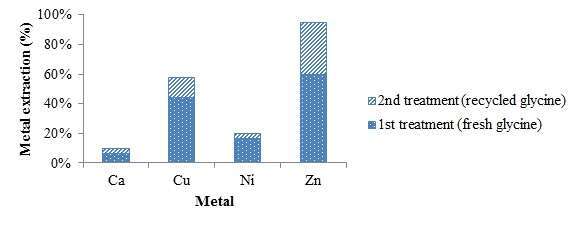
Heavy metal transfer from metal-glycine complexes to a chelating resin: Reaction mechanisms and potential applicability in soil remediation
2Faculty of Engineering, Tel Aviv University, Tel Aviv, Israel
Chelating resins such as Chelex-100 are used nowadays for detection, concentration and separation of metal ions in various media from biological samples to ground water. However, their applicability in environmental chemistry remains poorly studied.
Our group is focusing at developing environmentally-friendly soil remediation processes. Particularly, a number of simple amino acids were successfully tested as heavy metal-extracting chelators. Recovery and reuse of the amino acids was studied using model copper and nickel glycinate complexes and Chelex-100 chelating resin. Both metals were readily transferred to the resin from diglycinate complexes MG2. Adsorption of nickel from NiG2 onto Chelex-100 proceeds pretty fast, but it is considerably slowed down by 5 fold excess of sodium glycinate, that clearly indicates the expected ligand pre-dissociation followed by fast adsorption of Ni2+ by Chelex-100 (dissociative mechanism). Surprisingly, in contrast to nickel, adsorption of copper from CuG2 is not affected by excess of sodium glycinate. This finding excludes an option of copper pre-dissociation as a major mechanistic pathway, and allows suggesting an associative (conjoined) mechanism of Cu2+ transfer. Thus, different metal complexes react with Chelex-100 by different preferred mechanistic pathways. Additional evidences including dependence of the reaction rate on the solution viscosity, will be outlined.
Glycine solution used for extracting heavy metals from the contaminated soil, was recycled with the resin, and successfully re-applied, thus proving the chelator recovery-reuse concept.
The present study is aimed to understand mechanisms and selectivity of the widely used metal transfer processes, and to contribute to the search of “green” soil remediation technologies.

Powered by Eventact EMS